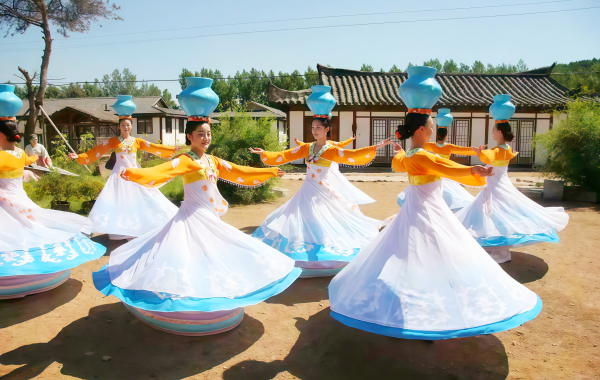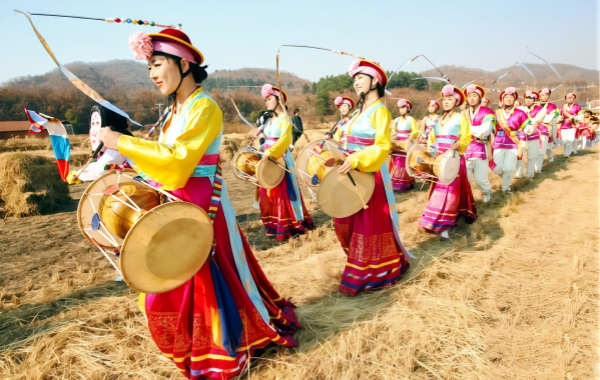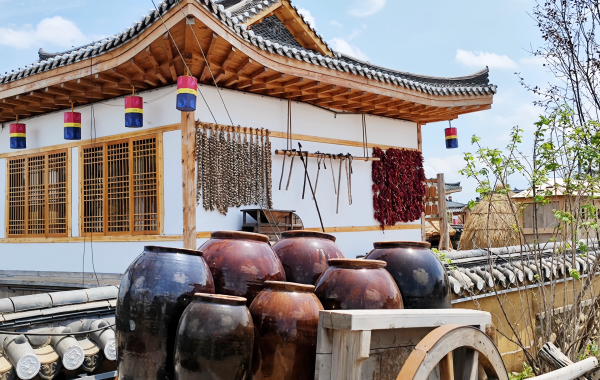Korean
Introduction

The Korean Nationality in China is a vibrant and culturally rich ethnic group. Known for their unique traditions, strong family values, and a deep - seated love for music and dance, the Korean people have made significant contributions to China's multicultural landscape. They have maintained their distinct cultural identity while integrating harmoniously into the broader Chinese society.
 History
History
· Origin
The ancestors of the Korean people in China can be traced back to the Korean Peninsula. During the late 19th and early 20th centuries, due to various factors such as economic hardships and political instability on the peninsula, a large number of Koreans migrated to Northeast China in search of better living conditions.
· Development
After settling in China, the Korean immigrants gradually adapted to the local environment. They established their own communities, developed agriculture, and engaged in various economic activities. During the anti - Japanese war and the liberation war, the Korean people in China actively participated in the revolutionary struggles, making important contributions to China's independence and liberation.
· Modern Times
In modern times, the Korean people in China have continued to thrive. They have actively participated in the country's economic construction and social development while preserving and promoting their unique cultural heritage. The government has also implemented a series of policies to support the development of ethnic minority cultures, providing a favorable environment for the Korean people to carry forward their traditions.
 Population
Population
· Quantity
As of the latest census data, the Korean population in China is approximately 1.7 million, making them one of the larger ethnic minorities in the country.
· Distribution
The Korean people are mainly distributed in Northeast China. Jilin Province has the largest Korean population, followed by Liaoning and Heilongjiang provinces. Yanbian Korean Autonomous Prefecture in Jilin is a well - known Korean settlement area, where the Korean culture is deeply rooted and widely spread.
 Economy
Economy
Traditionally, the Korean economy in China was mainly based on agriculture, especially rice cultivation. They were skilled in irrigation and farming techniques, producing high - quality rice. In modern times, with the development of the market economy, the economic structure of the Korean people has diversified. In addition to agriculture, they are also involved in industry, commerce, and service sectors. Many Korean - owned enterprises have emerged, contributing to the local economic development.
 Culture
Culture
· Language and Script
The Korean language belongs to the Koreanic language family. It has its own unique writing system, Hangul, which was created in the 15th century. Hangul is a scientific and easy - to - learn writing system, reflecting the wisdom of the Korean people. In China, the Korean language is widely used within the Korean community, and there are also Korean - language schools and media outlets to promote the language and culture.
· Religious Beliefs
Shamanism has a long history among the Korean people, with shamans playing important roles in spiritual and ritual activities. Buddhism was introduced to the Korean Peninsula from China in ancient times and has also had a significant influence on Korean culture. In modern times, Christianity has gradually spread among the Korean people, and there are many Christian churches in Korean - populated areas.
· Clothing
The traditional Korean clothing, Hanbok, is known for its elegant and simple design. Women's Hanbok usually consists of a long - sleeved jacket and a high - waisted skirt, often in bright colors and with delicate embroidery. Men's Hanbok includes a jacket and pants, usually in more subdued colors. Although modern clothing is widely worn in daily life, Hanbok is still an important symbol of Korean culture and is often worn on special occasions such as weddings and festivals.
 · Music and Dance
· Music and Dance
Korean music is characterized by its unique rhythms and melodies. Traditional Korean musical instruments include the gayageum (a zither - like instrument), the daegeum (a large bamboo flute), and the janggu (a double - headed drum). Korean dance is diverse and expressive, with different styles representing various themes such as nature, history, and daily life. The fan dance and the drum dance are well - known Korean dances that showcase the grace and vitality of the Korean people.
· Literature
Korean literature has a rich tradition, including oral literature such as folk tales, proverbs, and songs, as well as written literature in the form of poems, novels, and plays. Many Korean literary works reflect the people's life experiences, emotions, and values. In recent years, there has been a growing number of Korean writers in China who have made contributions to Chinese literature with their unique perspectives and cultural backgrounds.
· Cuisine
Korean cuisine is famous for its spicy and sour flavors. Kimchi, a fermented vegetable dish, is a staple in Korean meals and is known for its rich nutritional value and unique taste. Other popular Korean dishes include bibimbap (a mixed rice dish), galbi (grilled ribs), and cold noodles. Korean cuisine also emphasizes the use of fresh ingredients and a balanced diet.
 Science
Science
· Medicine
Traditional Korean medicine has a long history and is based on the theory of yin and yang and the five elements. Korean herbal medicine is an important part of traditional medicine, using a variety of natural herbs to treat diseases and maintain health. In modern times, traditional Korean medicine has been integrated with Western medicine, providing more comprehensive healthcare services for the Korean people.
· Calendar
The Korean people have their own traditional calendar, which is based on the lunar cycle. The traditional Korean calendar is used to determine important festivals and agricultural activities. Although the solar calendar is widely used in modern life, the traditional calendar still plays an important role in Korean culture, especially in religious and folk festivals.
 Art
Art
 · Architecture
· Architecture
Traditional Korean architecture is characterized by its simplicity, harmony with nature, and unique roof designs. Korean houses often feature tiled roofs with upturned eaves, which not only add to the aesthetic appeal but also have practical functions such as preventing rainwater from dripping onto the walls. The interior layout of Korean houses is designed to be functional and comfortable, with separate areas for living, sleeping, and cooking. In modern times, while modern architectural styles are more common, some traditional architectural elements are still incorporated into new buildings to preserve cultural heritage.
· Painting and Calligraphy
Korean painting has a long history, with different styles emerging over time. Traditional Korean paintings often depict natural landscapes, flowers, birds, and historical events. Korean calligraphy is also highly regarded, with calligraphers using brushes and ink to create beautiful and expressive characters. Both painting and calligraphy are important forms of artistic expression in Korean culture.
· Handicrafts
Korean handicrafts are known for their exquisite craftsmanship and unique designs. Traditional Korean handicrafts include ceramics, metalwork, and woodwork. Korean ceramics, such as celadon, are famous for their delicate glazes and beautiful shapes. Metalwork and woodwork also showcase the high level of skill of Korean artisans, with intricate patterns and decorations.
 Custom
Custom
· Etiquette
Korean etiquette places great emphasis on respect for elders and social hierarchy. When meeting others, Koreans usually bow as a sign of greeting, and the depth of the bow may vary depending on the relationship and social status. In social interactions, it is important to use polite language and show good manners. For example, when receiving gifts, Koreans usually express gratitude with both hands.
· Marriage Customs
Korean marriage customs are rich in tradition. The marriage process usually includes several steps, such as matchmaking, engagement, and the wedding ceremony. The wedding ceremony is a grand event, often held in a traditional Korean - style hall. The bride and groom wear traditional Hanbok, and there are various rituals and ceremonies to bless the new couple. After the wedding, the newlyweds may live with the groom's family for a period of time.
· Festivals
The Korean people celebrate many important festivals throughout the year. The Spring Festival (Chinese New Year) is an important family - oriented festival, during which families gather together to have a reunion dinner and exchange gifts. The Mid - Autumn Festival is also celebrated, with people enjoying mooncakes and appreciating the full moon. In addition, there are some unique Korean festivals, such as the Kimchi - making Festival, which showcases the traditional Korean food culture.
· Funeral Customs
Korean funeral customs are based on respect for the deceased and the belief in an afterlife. The body is usually washed and dressed in clean clothes before being placed in a coffin. Family and friends gather to pay their respects and offer condolences. Funeral prayers and rituals are performed to guide the soul of the deceased to the afterlife. After the funeral, there is a mourning period during which relatives and friends continue to support the bereaved family.
What Our Clients Say?
Based on 10,000+ traveler reviews











